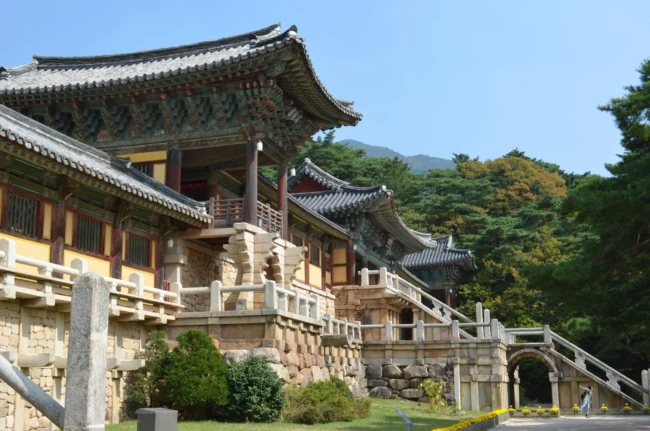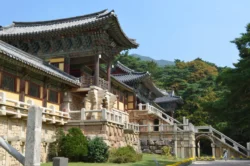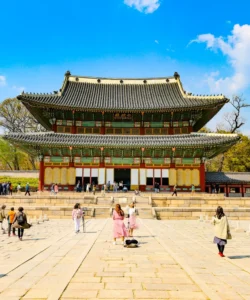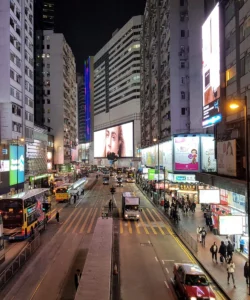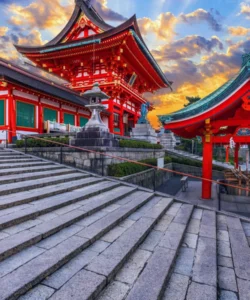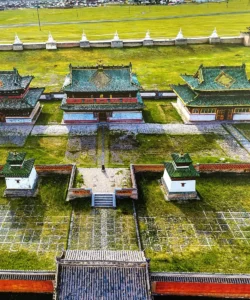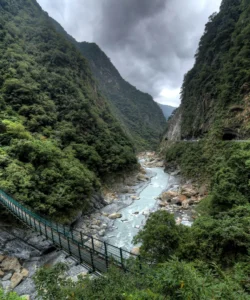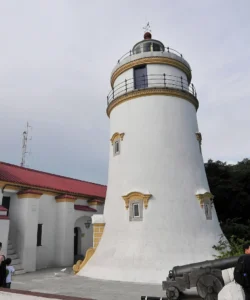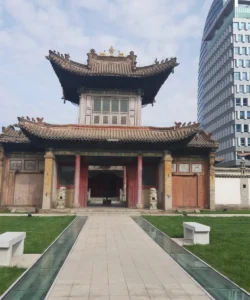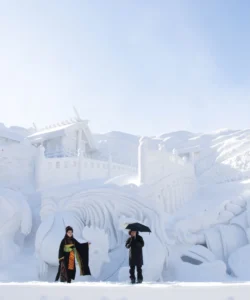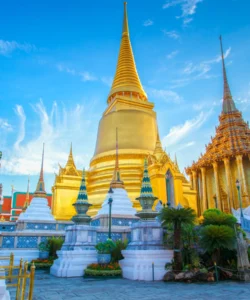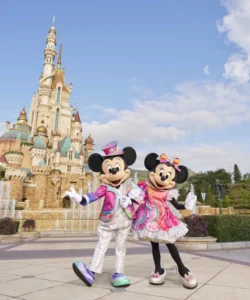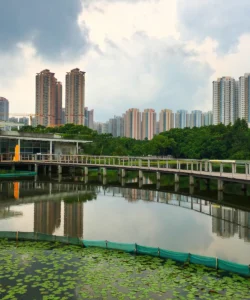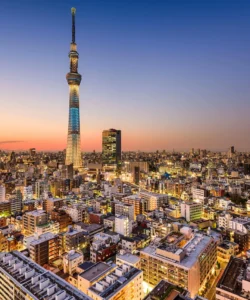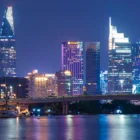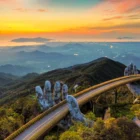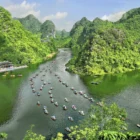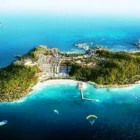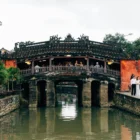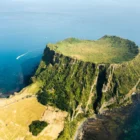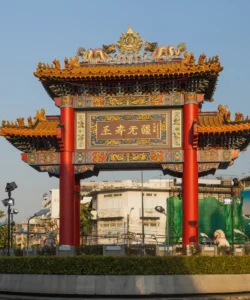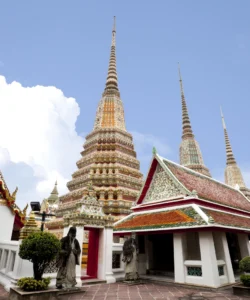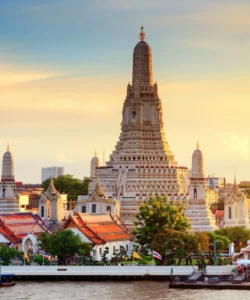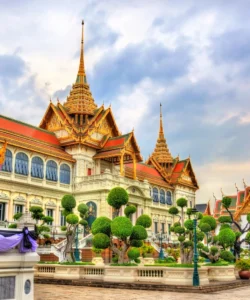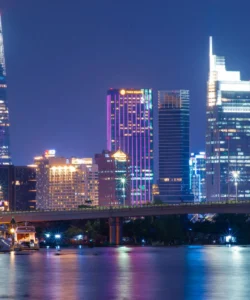Bulguksa Temple, meaning “Temple of the Buddha Land,” is a magnificent Buddhist temple located on the slopes of Mount Tohamsan in Gyeongju, South Korea. Dating back to the 8th century Unified Silla Kingdom, it is widely regarded as a pinnacle of Silla Buddhist art and architecture, a profound representation of the ideal Buddhist world, and a cherished UNESCO World Heritage site.
Name: Bulguksa Temple (불국사; 佛國寺)
Address: 385 Bulguk-ro, Gyeongju-si, Gyeongsangbuk-do, South Korea.
How to get there:
Bulguksa Temple is easily accessible from Gyeongju’s city center:
- From Gyeongju Bus Terminal (Intercity/Express): Take public buses 10, 11, or 700 from the bus stop across the road from the terminal. The journey usually takes 40-50 minutes.
- From Gyeongju Station: Take bus 700.
- Taxi: A taxi ride from downtown Gyeongju to Bulguksa takes about 20-30 minutes.
- From Seokguram Grotto: Bus routes connect Bulguksa Temple directly to the nearby Seokguram Grotto, which is often visited together.
- From Busan: Take an intercity bus from Busan Central Bus Terminal to Gyeongju Intercity Bus Terminal, then transfer to a local bus (10, 11, or 700) to Bulguksa.
Landscape and Architecture:
Bulguksa Temple is an intricate complex of wooden buildings built on elevated stone terraces, meticulously designed to symbolize the various realms of the Buddha land:
- Stone Terraces and Bridges: The most distinctive architectural features are the series of grand stone terraces and bridges that lead up to the main temple halls.
- Cheongun-gyo (Blue Cloud Bridge) and Baegun-gyo (White Cloud Bridge): These two bridges (National Treasure No. 23) form a double-sectioned staircase of 33 steps, leading to the Jahamun (Purple Mist Gate). Symbolically, the 33 steps represent the 33 stages of enlightenment necessary to reach the Buddha’s realm.
- Yeonhwagyo (Lotus Flower Bridge) and Chilbogyo (Seven Treasures Bridge): These bridges (National Treasure No. 22) lead to the Anyangmun Gate, representing the path to the Western Paradise of Amitabha Buddha.
These stone structures showcase the unparalleled masonry work of the Silla period.
- Pagodas: Two of Korea’s most famous and significant stone pagodas stand in the main courtyard in front of Daeungjeon Hall:
- Seokgatap (Pagoda of Sakyamuni, National Treasure No. 21): A classic three-story, simple, and elegant Korean-style stone pagoda, standing at 8.2 meters tall.
- Dabotap (Pagoda of Bountiful Treasures, National Treasure No. 20): A more ornate and elaborate 10.4-meter-tall pagoda, unique in its complex structure with multiple levels, balustrades, and intricate carvings. Its image is featured on the South Korean 10-won coin. The presence of two distinct pagodas in one courtyard is unusual.
- Main Halls: The temple grounds are divided into three symbolic areas representing different Buddhist realms:
- Daeungjeon (Hall of Great Enlightenment): The main hall housing the Sakyamuni Buddha.
- Birojeon (Vairocana Buddha Hall): Housing a gilt-bronze Vairocana Buddha statue (National Treasure No. 26).
- Geuknakjeon (Hall of Supreme Bliss): Housing a gilt-bronze Amitabha Buddha statue (National Treasure No. 27).
- Dancheong Colors: The wooden structures are adorned with vibrant Dancheong, traditional Korean polychrome patterns, creating a beautiful and protective layer.
- Integrated with Nature: The temple is peacefully nestled on the slopes of Tohamsan Mountain, harmonizing with the natural surroundings.
What makes it famous:
Bulguksa Temple is famous for:
- UNESCO World Heritage Site: Designated in 1995 along with the nearby Seokguram Grotto, recognized for its exceptional significance as a religious architectural complex and a masterpiece of East Asian Buddhist art from the Silla Kingdom.
- Masterpiece of Silla Buddhist Art: It represents the pinnacle of Buddhist art, architecture, and craftsmanship during the Unified Silla period (668-935 CE), often referred to as a “golden age” for Korean Buddhism.
- National Treasures: It is home to six (and numerous other important tangible assets), including the two iconic pagodas (Dabotap and Seokgatap), the two sets of stone bridges, and two gilt-bronze Buddha statues.
- Symbolic Representation of Buddha Land: The temple’s entire layout and design are a meticulously crafted representation of the Buddhist paradise, allowing visitors to symbolically journey from the earthly realm to the land of the Buddha.
- Resilience and Restoration: Though it suffered significant destruction during the Japanese invasions of 1592-1598, with all its wooden buildings burned down, it has undergone extensive restoration efforts throughout its history, notably a major project from 1969 to 1973, bringing it to its current form and demonstrating Korea’s dedication to preserving its cultural heritage.
- Spiritual and Cultural Center: It continues to be an active head temple of the Jogye Order of Korean Buddhism, maintaining its role as a vibrant center for religious practice, learning, and cultural preservation.
Differences from some other wonders:
Bulguksa Temple stands out from other temples and architectural wonders due to its specific characteristics:
- Integrated with Seokguram Grotto: Its designation as a joint UNESCO World Heritage site with the nearby Seokguram Grotto is a unique aspect. While Bulguksa is a grand temple complex, Seokguram is an artificial stone grotto with a monumental Buddha, representing different but complementary facets of Silla Buddhist art and belief, designed by the same chief minister, Kim Dae-seong. This “temple and grotto” complex is a highly distinctive pairing.
- Mathematical and Philosophical Design: The sophisticated engineering and symbolic meaning embedded in its stone terraces and bridges (e.g., 33 steps to enlightenment) are particularly noteworthy. Its architectural design is deeply rooted in Buddhist cosmology, aiming to represent the very “Land of Buddha” on Earth, a level of philosophical integration that sets it apart from many other temples.
- Duality of Pagodas (Dabotap and Seokgatap): The simultaneous presence of two distinct pagodas—one simple and traditional (Seokgatap) and one ornate and unique (Dabotap)—in the same main courtyard is an unusual and iconic feature. This architectural contrast is specific to Bulguksa and is rich in Buddhist symbolism (representing the historical Buddha and the Buddha of many treasures).
- Unified Silla Pinnacle: While other temples might represent various dynasties, Bulguksa is consistently cited as the quintessence and apex of Buddhist art and architecture from the Unified Silla Kingdom, a period known for its flourishing culture.
- Purpose of Remembrance: The traditional account of its founding by Prime Minister Kim Dae-seong in memory of his parents (present and past lives) imbues the temple with a profound personal and spiritual motivation beyond mere royal patronage, adding to its unique narrative.
In essence, Bulguksa Temple is not just a beautiful place of worship; it is a meticulously crafted sacred space, a living artifact of a golden age, and a profound testament to the spiritual and artistic heights achieved by the ancient Silla Kingdom.
